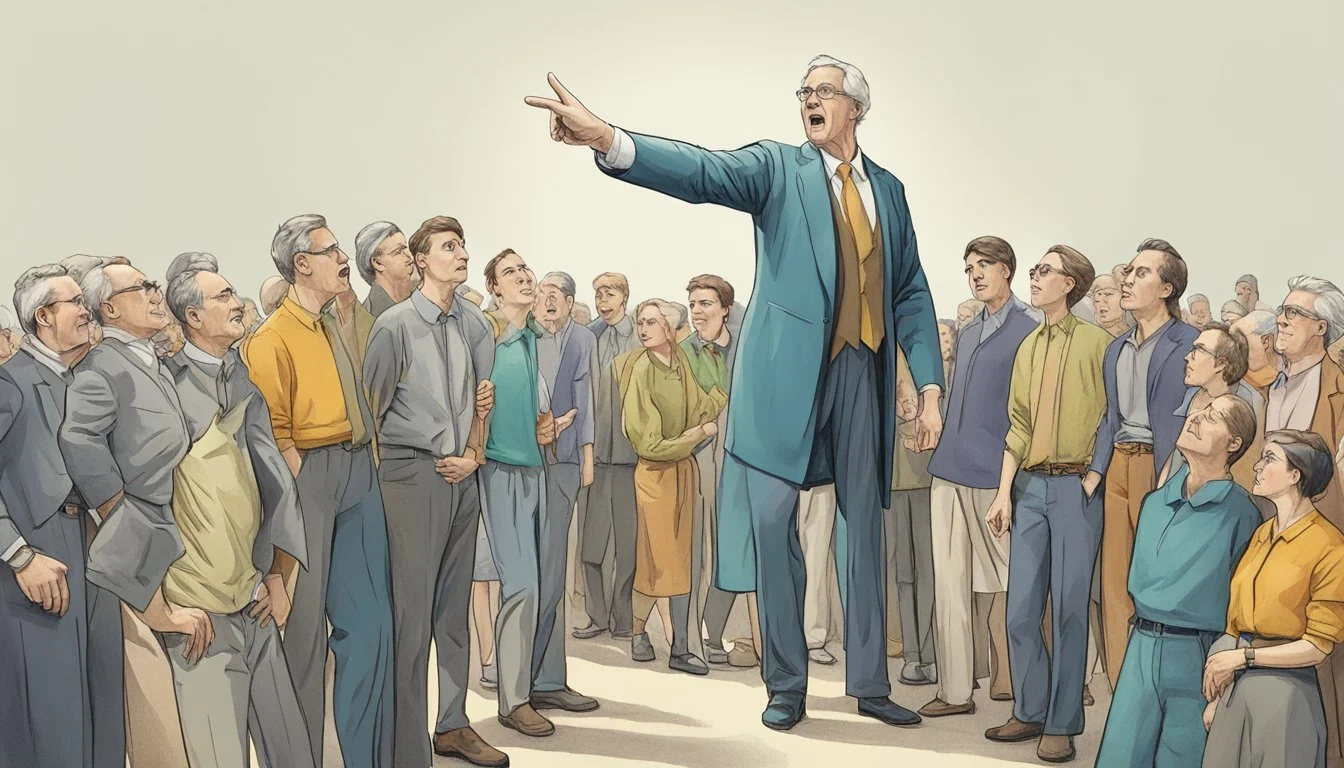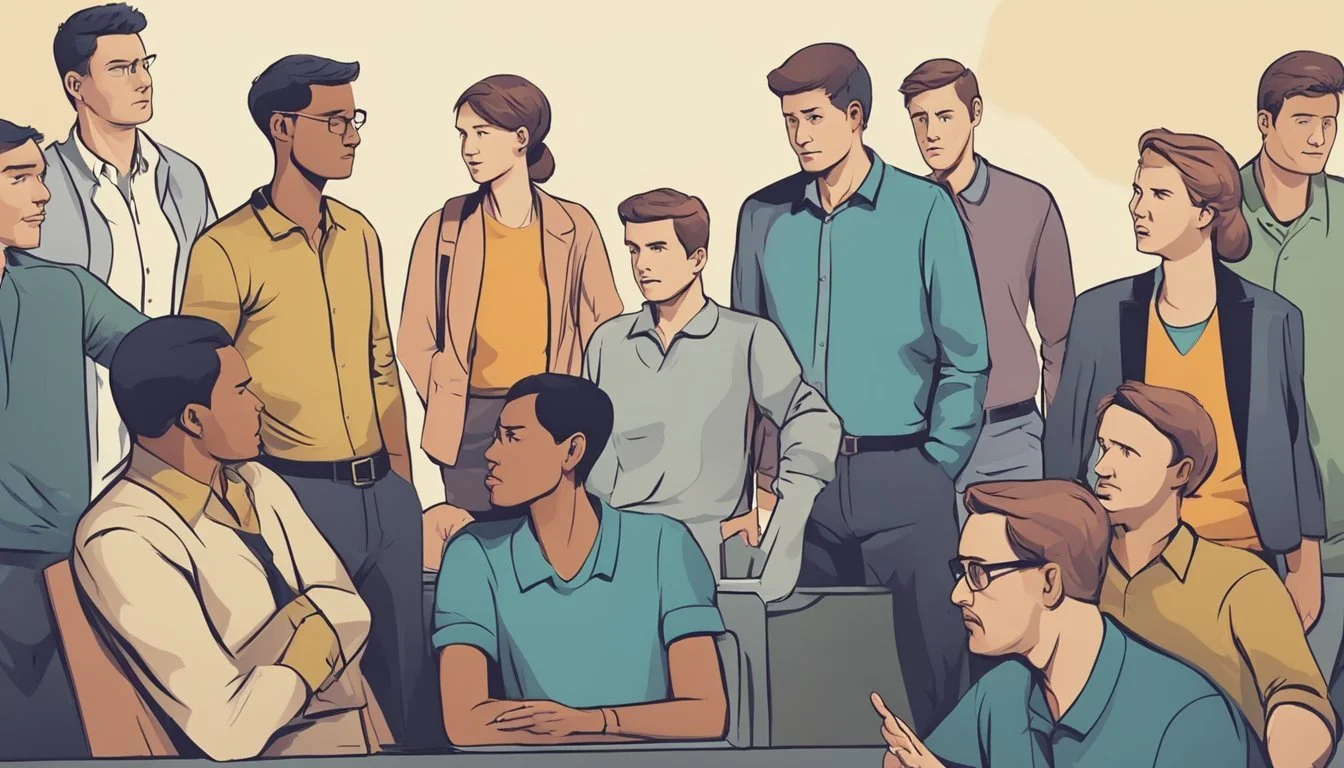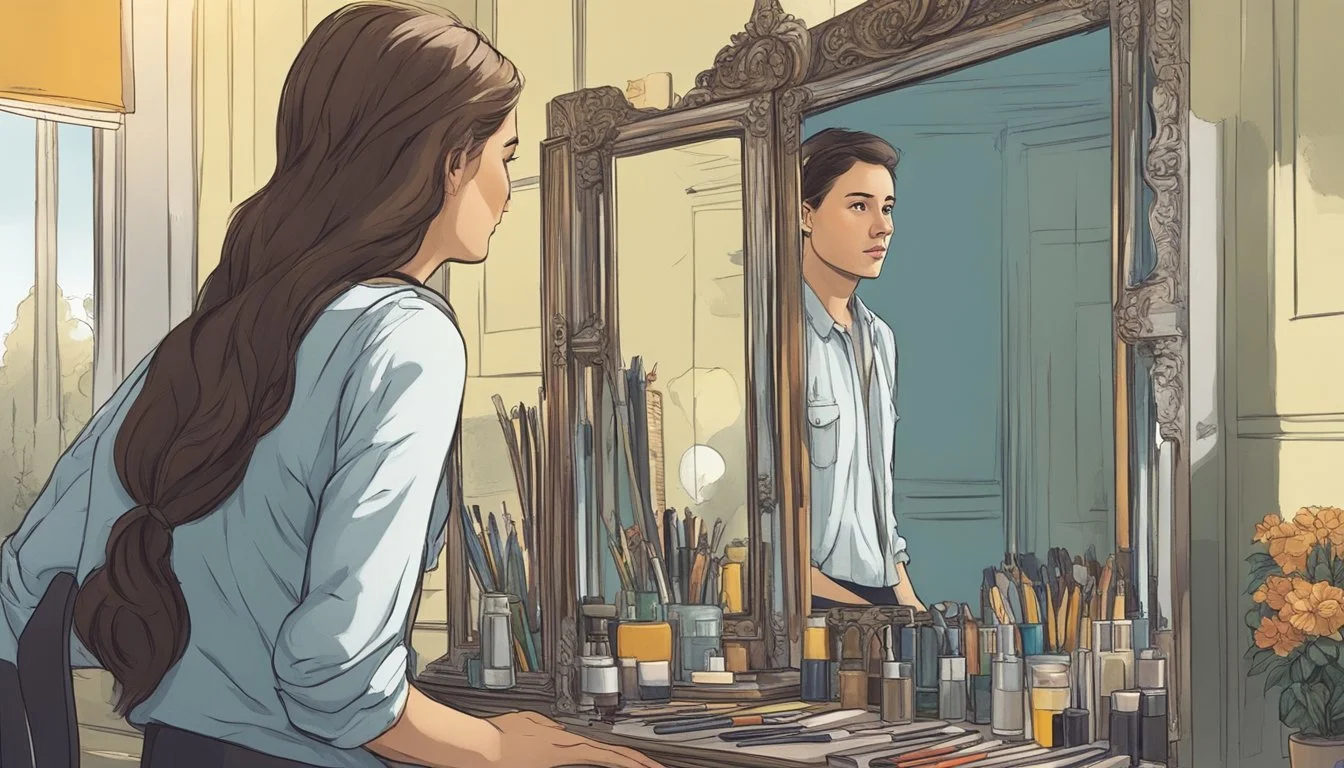11 Signs You're Dealing with a Narcissistic Collaborator in the Arts
Identifying Toxic Traits
Navigating the complex dynamics of collaborative projects in the arts can be challenging, especially when dealing with difficult personalities. Understanding the traits of a narcissistic collaborator is crucial for maintaining healthy and productive partnerships. Artists often experience unique pressures and environments that can magnify narcissistic behaviors, making it essential to recognize and address them promptly.
The arts industry thrives on creativity and close partnerships, but the presence of a narcissistic collaborator can disrupt this delicate balance. By identifying characteristic behaviors, artists and professionals can implement strategies to protect their mental health and ensure the success of their projects.
1) Excessive Need for Admiration
A common trait of narcissistic collaborators in the arts is their excessive need for admiration. They constantly seek validation from their peers and audience. This unrelenting pursuit of praise often overshadows their actual contributions and achievements.
Narcissists in the arts may exhibit grandiosity, which can make working with them challenging. They frequently demand recognition and acknowledgment, even for trivial accomplishments. This behavior can create tension in collaborative environments.
When their need for admiration is not met, they may react negatively. This could include withdrawing from group activities or undermining the efforts of others. They tend to equate admiration with self-worth and may struggle to maintain stable relationships.
In arts communities, this excessive need for admiration is noticeable. Narcissistic collaborators often dominate conversations and project meetings, attempting to steer attention towards their work. Associates and teammates may find it tiresome to constantly cater to their need for validation.
Their self-esteem might appear fragile, despite their outward confidence. This fragility stems from their deep-seated insecurities, making any perceived slight or lack of admiration a potentially severe blow. Additionally, they may show signs of being exploitative in their relationships and prone to manipulative behavior.
Narcissistic collaborators frequently feel envious of others' successes. They may exhibit bitterness and resentment, rather than celebrating their peers' achievements. This envy further fuels their desperate desire for admiration.
2) Lack of Empathy
A key sign of a narcissistic collaborator in the arts is their lack of empathy. They often struggle to understand or share the feelings of others.
These individuals are typically unable to recognize when their actions hurt others. This makes teamwork and effective communication a significant challenge.
A narcissistic collaborator may exhibit behavior indicative of tunnel vision. They tend to reject perspectives that differ from their own, causing friction within a team. This behavior can lead to feelings of isolation among their colleagues.
Narcissists in the arts often struggle with boundaries. They assume everyone shares their thoughts and feelings, leading to conflicts and misunderstandings. This lack of empathy can impact the creativity and morale of the group.
Moreover, they frequently misinterpret or dismiss subtle social cues and facial expressions. This misreading of emotions can result in further emotional distress for those around them.
Such behaviors can be particularly damaging in collaborative art projects. The creative process often relies on mutual respect and understanding, both of which are compromised by a lack of empathy. This often hampers progress and affects the overall quality of the work produced.
3) Constant Belittling of Others
A narcissistic collaborator in the arts often resorts to constant belittling of others to maintain a sense of superiority. This behavior frequently targets colleagues' work, skills, or ideas, undermining their confidence and contributions.
Such individuals may dismiss creative efforts, making derogatory remarks or highlighting flaws in a condescending manner. This creates a toxic environment, stifling collaboration and innovation.
Belittling can also extend to public settings, where the narcissist criticizes others in front of peers, further diminishing their self-esteem. They thrive on making others feel inferior to elevate their own self-importance.
This pattern is not just limited to verbal comments. Non-verbal cues, such as dismissive gestures or eye-rolling, also play a role in their belittling tactics. These actions communicate disdain and lack of respect, contributing to an unhealthy professional dynamic.
For more insights on typical narcissistic behaviors, visit 14 Signs You're Dealing With A Narcissist.
4) Using Others for Personal Gain
One common trait of a narcissistic collaborator in the arts is leveraging others for their own benefit. They often aim to exploit the talents, time, and resources of their peers to advance their own career.
These individuals are adept at identifying and capitalizing on the strengths of those around them. However, their contributions are minimal and sometimes intentionally invisible.
A narcissistic collaborator may take credit for the collective work. Publicly, they highlight their role and downplay the efforts of others. Such behavior fosters discord and diminishes team morale.
In situations where resources or opportunities are shared, they ensure they receive the lion's share. This might include hoarding funding, project highlights, or key networking opportunities.
By recognizing these patterns, one can better navigate and protect against the manipulative tactics employed by narcissistic collaborators. More information on these tactics can be found at 20 tactics narcissists use to convince everyone they are a good person.
5) Inflated sense of self-importance
One sign of a narcissistic collaborator in the arts is an inflated sense of self-importance. This trait often manifests as a belief that their work and ideas are far superior to those of others. They may insist their contributions are crucial for the project's success.
Such individuals often have a deep need for constant validation. They may continuously seek attention and praise, disregarding the efforts and contributions of others. Any criticism, no matter how constructive, can be perceived as a personal attack.
A narcissistic artist may frequently boast about their achievements, even exaggerating their past successes. They might demand special treatment or privileges, feeling entitled to more recognition and resources than their peers.
In team settings, their inflated self-importance can disrupt collaboration. They may monopolize conversations, ignore others' ideas, and undermine team morale. This behavior can create tension and hinder the creative process.
Addressing this issue requires clear communication and setting boundaries. It's important to recognize and manage their behavior to maintain a healthy and productive collaboration. More insights into the symptoms of narcissistic personality disorder can be found at Verywell Mind.
6) Monopolizing Conversations
A narcissistic collaborator often dominates conversations. They may control the discussion, making it hard for others to contribute. This behavior can create an unbalanced dynamic, leaving team members feeling unheard.
They rarely let others share their thoughts or feelings. Instead, they continually steer the conversation back to their own experiences. This pattern is a clear indicator of conversational narcissism.
Even when someone else gets a chance to speak, the narcissist quickly interrupts. They may acknowledge the other's point briefly but then shift the focus back to themselves. This relentless redirection can stifle creativity and collaboration.
Their need to dominate conversations often results in one-sided discussions. This monologue-style communication undermines the collaborative nature essential in the arts. It leaves little room for exchange, learning, or growth within the team.
Indications of this behavior can be seen in various settings, such as during meetings or informal discussions. For more details on identifying such communication traits, check this comprehensive guide on conversational narcissism.
Routine monopolization of conversations can lead to frustration among peers. This frustration can ultimately impact the overall work environment and productivity. Addressing this issue is crucial for fostering a healthy and collaborative atmosphere.
7) Expecting Special Treatment
A narcissistic collaborator often expects special treatment. They believe their talents and contributions make them more deserving than others.
Such individuals may demand exclusive privileges. This might include insisting on premium working environments or claiming more prominent billing in credits.
Their need for admiration often drives these expectations. A narcissistic colleague may seek constant validation and praise from peers and supervisors.
Disagreements can escalate quickly. When their desires aren't met, the narcissistic collaborator might react with anger or withdrawal, making professional interactions difficult.
Their behavior can disrupt team dynamics. Other team members might feel undervalued, leading to decreased morale and productivity.
Recognizing this pattern is important. It helps in setting clear and firm boundaries within the collaborative environment.
For more details on identifying these behaviors, refer to the Cleveland Clinic's article on narcissistic traits.
8) Entitlement Without Justification
Narcissistic collaborators in the arts often exhibit a strong sense of entitlement. They believe they deserve special treatment or recognition without offering substantial contributions. This entitlement can manifest as demands for higher billing, more resources, or preferential opportunities, even when their input hasn't warranted such rewards.
This unearned entitlement can create significant tension within creative teams. It leads to conflicts as others may feel undervalued or overlooked. A narcissistic collaborator's inflated sense of self-worth can disrupt the collaborative process, undermining the project's success.
They frequently misinterpret agreements and bend rules to suit their desires. This behavior stems from their deep-seated belief that their status alone justifies exceptional treatment. Their entitlement often lacks any real foundation, which can be frustrating for those working diligently on the project.
Addressing this behavior requires a clear, assertive approach. Setting firm boundaries and managing expectations can help mitigate the negative impact. It's crucial to communicate clearly and ensure that contributions are recognized based on merit rather than self-perceived importance.
Despite their sense of entitlement, a narcissistic collaborator may still offer valuable skills. The key is to balance their contributions with the needs of the team, ensuring a fair and equitable working environment.
9) Envious of others' success
Narcissistic collaborators in the arts often exhibit intense envy of others' achievements. They find it difficult to celebrate their peers' successes and may downplay or dismiss accomplishments.
This envy can manifest through subtle sabotage. They may spread rumors or create conflicts to undermine those they perceive as threats.
When someone else is recognized or praised, these collaborators might attempt to shift attention back to themselves. They may highlight their own past successes or fabricate stories to overshadow the achievements of others.
Open admiration of peers is rare. More commonly, they offer backhanded compliments or faint praise designed to diminish the significance of others' work. Their primary goal is to protect their own fragile self-esteem.
Their envy often stems from deep-seated insecurity. Rather than focusing on their own growth, they continually compare themselves to others, leading to perpetual dissatisfaction. Pathologically envious narcissists tend to believe external factors, rather than talent or hard work, are behind others' success.
Interactions with envious narcissists can be exhausting and demoralizing for other artists. Building a positive working environment becomes challenging when one member is fixated on jealousy and competition.
Recognizing these behaviors early can help mitigate their impact. Setting boundaries and fostering a culture of mutual support and respect can counteract the negative influence of envy in creative collaborations.
10) Arrogant attitudes
A common trait of narcissistic collaborators in the arts is their persistent arrogance. They often act as though their work is vastly superior to that of their peers.
Such individuals may frequently dismiss constructive criticism, believing their own creative vision is flawless. They struggle to accept that others may have valuable input.
These collaborators may consistently brag about their past achievements, often embellishing their contributions. Their sense of self-importance can overshadow the collaborative spirit needed in artistic environments.
An arrogant attitude can also manifest in their interactions. They might expect special treatment, such as preferred project assignments or exclusive opportunities, assuming they deserve them more than others.
Their demeanor can be condescending towards colleagues. This attitude not only hampers teamwork but also creates an uncomfortable working environment. It's essential for teams to recognize and address these behaviors to maintain a healthy collaborative atmosphere.
For more information, you can refer to the Cleveland Clinic's guide on narcissistic behaviors and the Choosing Therapy article on narcissistic relationships. These resources provide further insights into identifying and managing narcissistic traits effectively.
11) Preoccupation with Fantasies of Power
A narcissistic collaborator in the arts may be deeply absorbed in fantasies of power, success, and brilliance. This individual might constantly imagine themselves achieving unparalleled fame or becoming a leading figure in their field.
They often believe they are destined for greatness and may see themselves as more talented than their peers.
This preoccupation with power can lead them to create unrealistic goals or projects. They might assume that their endeavors will naturally attract widespread acclaim and financial success, regardless of practicality.
Their fixation on achieving power can make them appear disconnected from the collaborative reality of the arts.
Such a collaborator may also display a strong desire for control. They might try to dominate group decisions, insist on leading projects, or minimize others' contributions.
This behavior often stems from their belief that their vision is superior and that they are uniquely equipped to achieve extraordinary outcomes.
A person with such preoccupations may overlook the collaborative nature of artistic work. They might disregard others' ideas and push their own agenda, believing that their success will inevitably benefit everyone involved.
This mindset can create tension and conflict within the team. Their focus on personal fantasies of power and success may overshadow the collective goals and efforts of the group, making productive collaboration difficult.
Understanding Narcissistic Behavior
Narcissistic behavior in the arts manifests through specific traits and patterns that can make collaboration challenging. Identifying these elements helps in managing difficult dynamics effectively.
Defining Narcissistic Traits
Narcissists often exhibit a lack of empathy, which means they struggle to understand or value others' perspectives. Their sense of entitlement can lead to unreasonable demands and expectations from collaborators. Additionally, they may display arrogance and a constant need for external validation. This makes them reliant on praise and approval to maintain self-esteem.
Other common traits include exploitative behavior, where they use others to achieve their goals without regard for the impact. Narcissists frequently experience envy toward those they perceive as more talented or successful, which can sometimes manifest as sabotage or smear campaigns against peers.
Common Patterns in Collaborative Settings
In collaborative arts settings, narcissists often dominate conversations and dismiss contributions from others. This behavior creates an unhealthy environment where team members may feel undervalued and demotivated. They may also engage in toxic projection, accusing others of their own negative traits or failures to deflect criticism from themselves.
Another typical pattern is stonewalling, where they refuse to engage in meaningful discussions or accept feedback, making problem-solving nearly impossible. Narcissists can also engage in verbal and emotional abuse, which is a form of psychological violence, aimed at maintaining control and power over their collaborators.
By recognizing these behaviors, collaborators can better navigate the challenges posed by working with a narcissistic individual, ensuring smoother project progression and a healthier team dynamic.
Impact on Artistic Collaborations
Narcissistic behavior can significantly affect artistic collaborations. Two primary areas of impact include creative differences and conflicts, as well as emotional and psychological effects on the involved parties.
Creative Differences and Conflicts
Artists with narcissistic traits often prioritize their vision over collaborative input. This behavior can lead to frequent creative differences. Narcissists might assert their ideas aggressively, dismissing or undermining others' contributions. This creates a competitive environment rather than a cooperative one.
The power dynamics can shift unfavorably. One artist dominating the creative process can stifle innovation. Over time, such conflicts can derail projects, making it difficult to achieve a cohesive artistic vision. The creative process benefits from diverse perspectives, but narcissistic behavior can inhibit this diversity, resulting in less dynamic work.
Emotional and Psychological Effects
Working with a narcissistic collaborator can take a toll on an artist’s emotional and mental health. Narcissistic individuals may employ manipulative tactics such as gaslighting, which can undermine the morale and self-esteem of their collaborators. This emotional strain can lead to stress, burnout, and a loss of creative enthusiasm.
Artists might feel isolated and undervalued, impacting their overall productivity and well-being. In some cases, the toxic environment created by the narcissist’s behavior can lead to the breakdown of collaborations entirely. Prioritizing mental health and maintaining open communication is crucial to navigate these challenges effectively.
Strategies for Managing a Narcissistic Collaborator
Navigating a narcissistic collaborator in the arts requires careful boundary setting and effective communication techniques. These strategies can help in maintaining a productive and respectful working relationship.
Setting Boundaries
Establishing clear boundaries is crucial when dealing with a narcissistic collaborator. These individuals often push limits and overstep personal and professional boundaries. Clearly define what is acceptable and what is not. For example, specify meeting times, deadlines, and decision-making processes in a written agreement.
Consistency is key. Enforce boundaries without exception to prevent any manipulative behavior. When boundaries are breached, address the issue immediately and reaffirm the expectations. This approach sends a strong message that certain behaviors will not be tolerated.
Additionally, boundaries should be communicated explicitly and assertively. Using “I” statements can help in expressing personal limitations without sounding accusatory. For instance, “I need our meetings to start on time to stay on schedule.” This method helps in maintaining respect and control over the interaction.
Effective Communication Techniques
Effective communication is vital for managing a narcissistic collaborator. Focus on direct and clear communication to avoid misunderstandings. It is important to be concise and specific in verbal and written communications.
Using a firm yet calm tone can help convey messages without escalating potential conflicts. When providing feedback, be specific about the behavior that needs change rather than making personal judgments. For example, instead of saying "You are always late," say "We need to start meetings on time."
Leverage the power of group dynamics to manage interactions. Collaborating in a team setting can make narcissistic traits more noticeable and discourage unacceptable behaviors. Documenting conversations and decisions can also be beneficial. This ensures clarity and provides a reference if disputes arise later on.
By implementing these communication techniques, interactions with a narcissistic collaborator can remain professional and productive.








